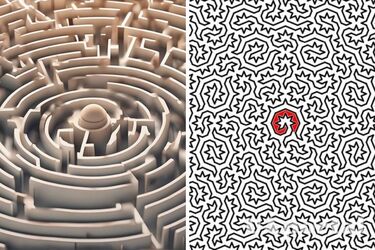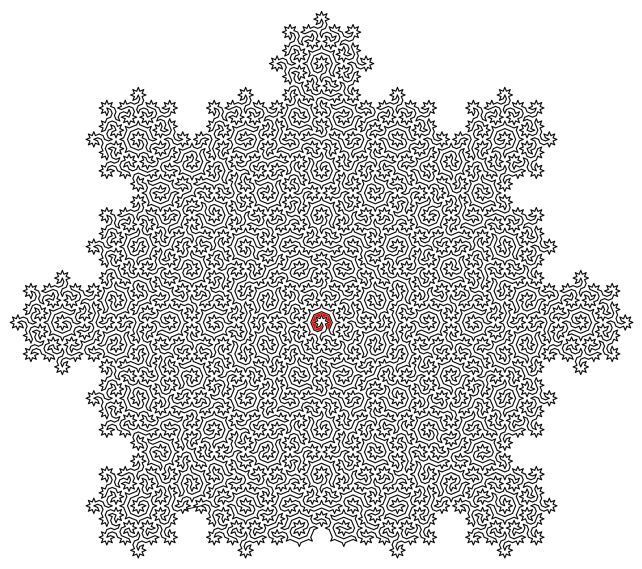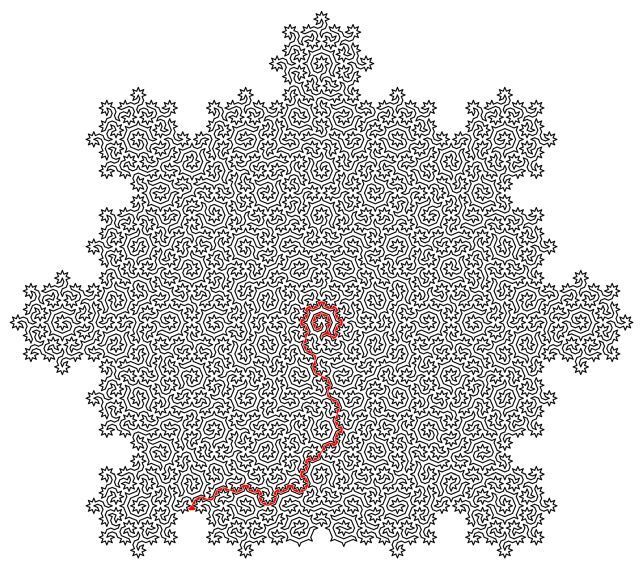Physicists have created the world's most complex maze (photo)

Scientists have combined the principles of fractal geometry and chess to create incredibly intricate mazes that describe an exotic form of matter known as quasicrystals. The researchers, led by physicist Felix Flicker of the University of Bristol in the United Kingdom, generated routes called Hamiltonian cycles in patterns known as Ammann-Banker mosaics.
These cycles form complex fractal mazes that, according to the scientists, can help us better understand the structure of quasicrystals. The study was published in the journal Physical Review X, ScienceAlert reports.
You may also be interested in: Physicists accidentally found a completely new way to write pi
"When we looked at the shapes of the lines we built, we noticed that they formed incredibly intricate mazes. The size of subsequent mazes grows exponentially - and there are an infinite number of them," explained physicist Flicker. The idea comes from the way a horse moves on a chessboard.
A knight, jumping two squares forward and one to the right, can visit each square on the board only once before returning to its original position. This route is an example of a "Hamiltonian cycle" - a path that passes through all the points in a graph only once.
Quasicrystals are a rare form of matter that combines order and disorder.
Unlike ordinary crystals, where atoms are arranged in a clear repeating structure, the atoms in quasicrystals form a pattern that does not repeat completely. These patterns are similar to aperiodic mosaics, such as the Penrose mosaic or the Ammann-Behnker mosaic, which have been used by scientists.


The researchers used the Ammann-Behnker mosaic to create Hamiltonian cycles that describe the structure of quasicrystals.
These cycles pass through each atom in the quasicrystal only once, connecting all the atoms into a single line that does not intersect with itself. This line is then used to create a maze with a starting point and an exit.
Furthermore, the research can have significant implications for other fields such as route finding, protein folding, and carbon capture.
For example, finding Hamiltonian cycles can help solve complex optimization problems, and quasicrystals can be more efficient than conventional crystals for carbon adsorption.
As a reminder, the scientist is confident that he has created an equation that will allow time travel.
If you want to get the latest news about the war and events in Ukraine, subscribe to our Telegram channel!
